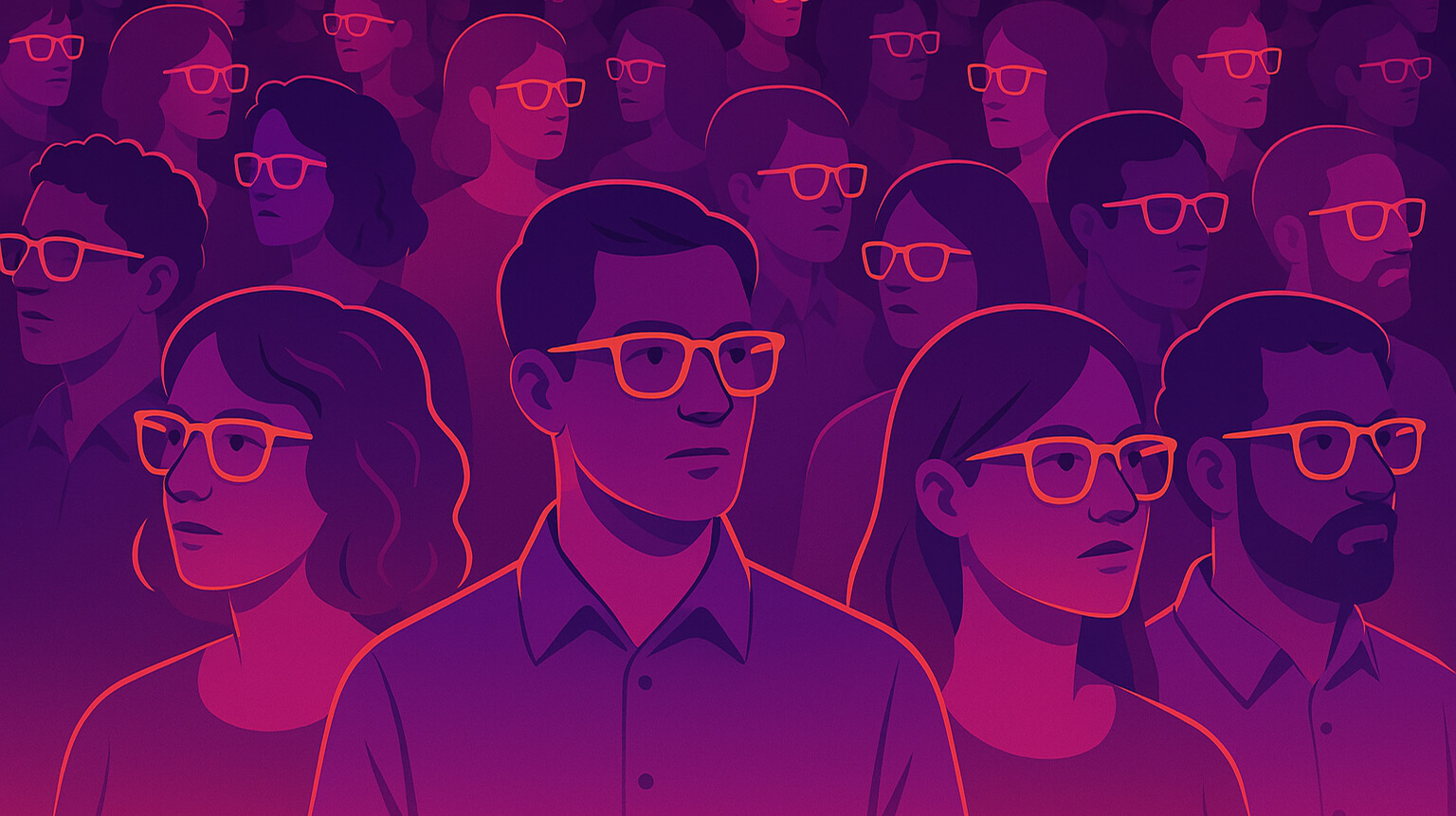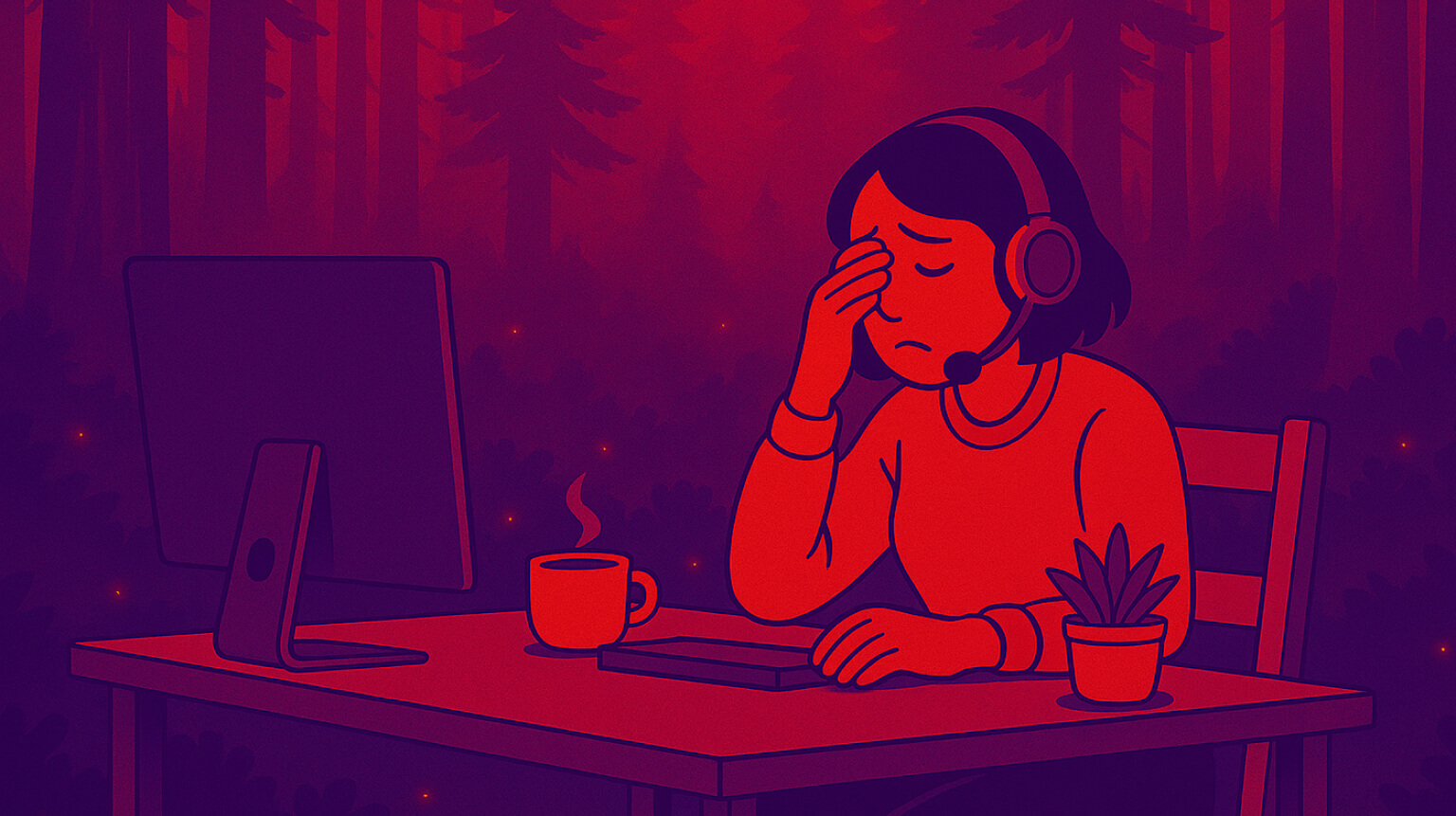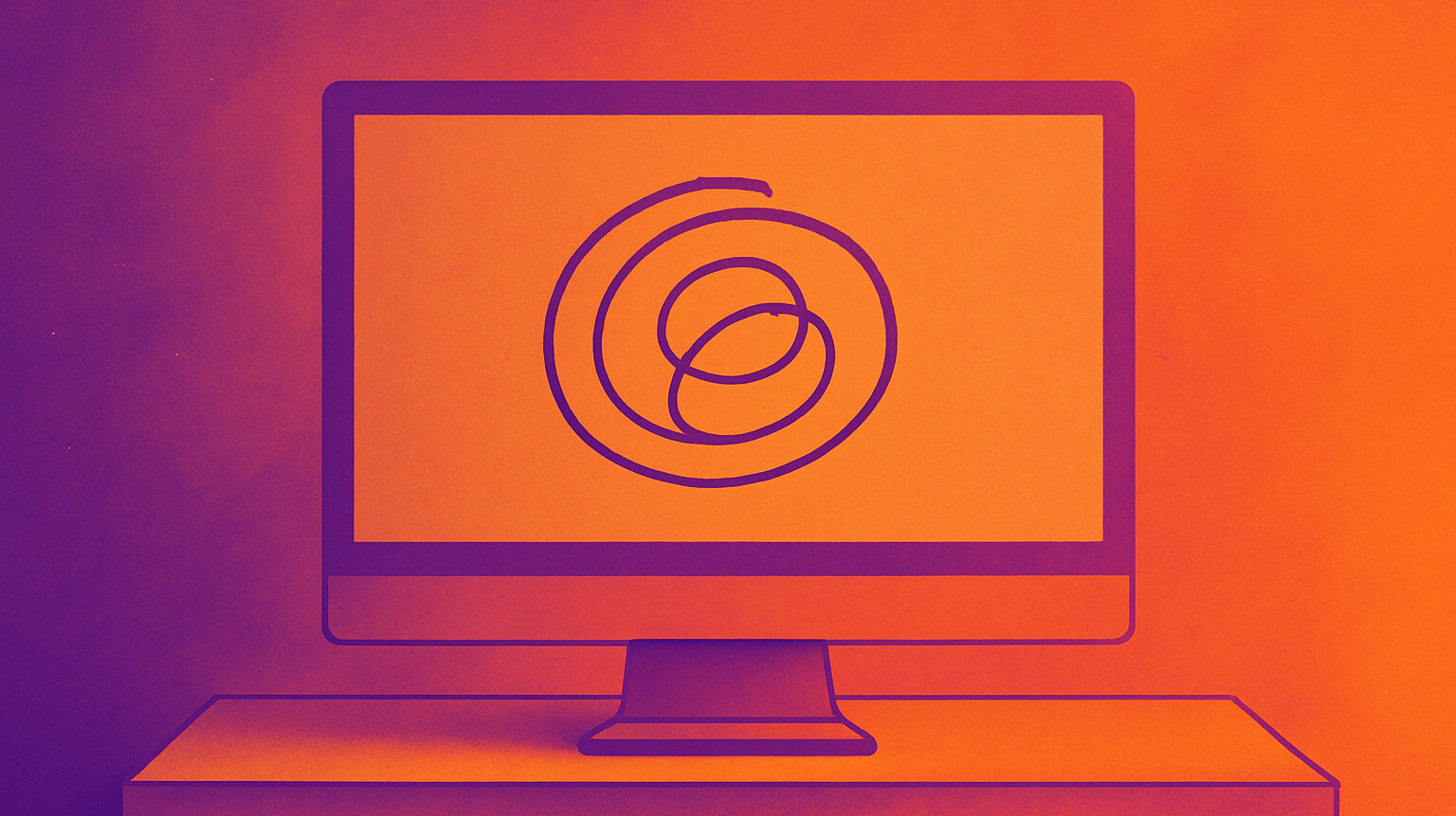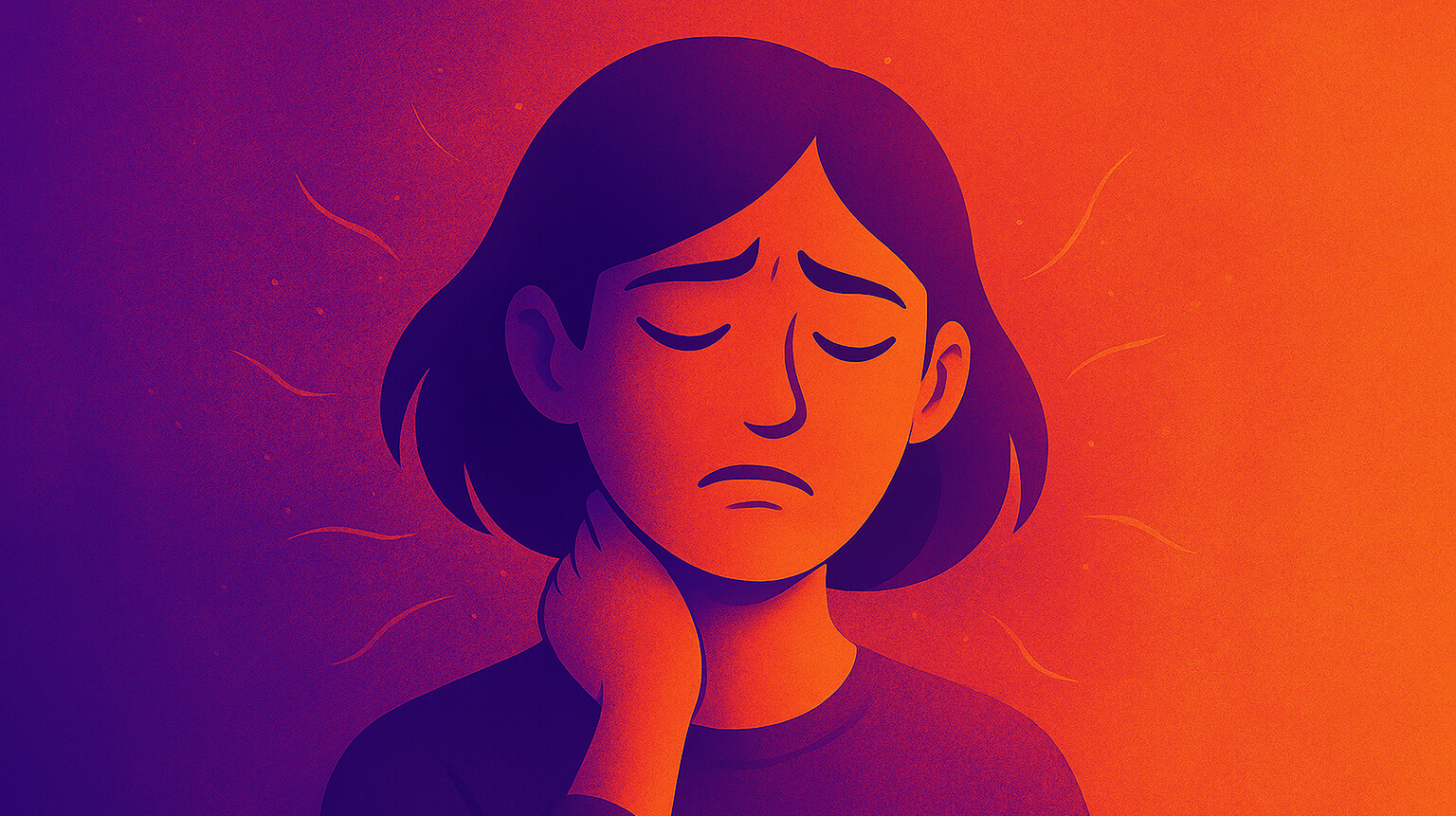This article is based on this video by Leod, which dives into the silent epidemic of myopia. I’ve expanded on it here with my own thoughts and sourced references.
In 2050, nearly half of the global population will be nearsighted.
That’s not a figure pulled from science fiction. It’s the projection from multiple studies analyzing how modern lifestyles are affecting our vision. Today, more than 2 billion people are already myopic. By mid-century, we’re looking at close to 5 billion. And it’s not just about glasses - for 1 billion people, this may turn into high myopia, a condition that carries the risk of permanent vision loss.
The crisis has already started, and it’s accelerating faster than most people realize.
| Covered in this article | |
|---|---|
| What’s driving the myopia epidemic | Hint: It’s not just screens |
| Why it’s exploding in kids | And why cities are making it worse |
| What this means for us by 2050 | Including health, military, and economic impact |
| What we can do today | And how apps like LookAway play a role |
What nearsighted people actually see
If you have perfect vision, it’s hard to understand what myopia feels like. Past 50 centimeters, everything becomes blurry. Even large text turns into white smudges. It’s like trying to read through fog.
This isn’t a rare condition. Three in ten people globally already experience this. What’s changing is the speed and scale of its spread.
A 2016 meta-analysis based on over 140 studies and more than 2 million participants predicted that by 2050, 49.8% of the world’s population will be myopic, and 20% of them will have high myopia.
That’s nearly 1 billion people who might not just see blurry, but risk retinal damage, optic nerve atrophy, and eventual blindness.
This isn’t just about genetics
Yes, genetics play a role. If one parent is myopic, your chances increase. If both are, the risk is even higher. But that alone doesn’t explain what’s happening in East Asia.
In Japan, 94.9% of students are nearsighted by the end of their school years. In countries like China, South Korea, and Singapore, 80 to 90% of teenagers and young adults are affected. That’s eight or nine out of ten young people.
This explosion can’t be explained by gene mutations. Evolution doesn’t work that fast. What’s more likely is that these populations always had the genetic predisposition - but something in the environment triggered it.
One clue is geographic disparity. A 2016 study found that in East Asia, children in urban areas are 2.6 times more likely to become myopic than those in rural areas.
It’s not ethnicity. It’s the environment.
What really caused this epidemic
Most people assume it’s screen time. But the rise in myopia predates smartphones and even computers.
The real catalyst was post-WWII education reform. Countries like Japan, South Korea, and later China, invested heavily in intense academic systems. School days stretched long. Homework became routine. Evening tutoring was common.
Today, many students in these countries spend over 10 hours a day studying. That includes school hours, after-school classes, and weekend prep.
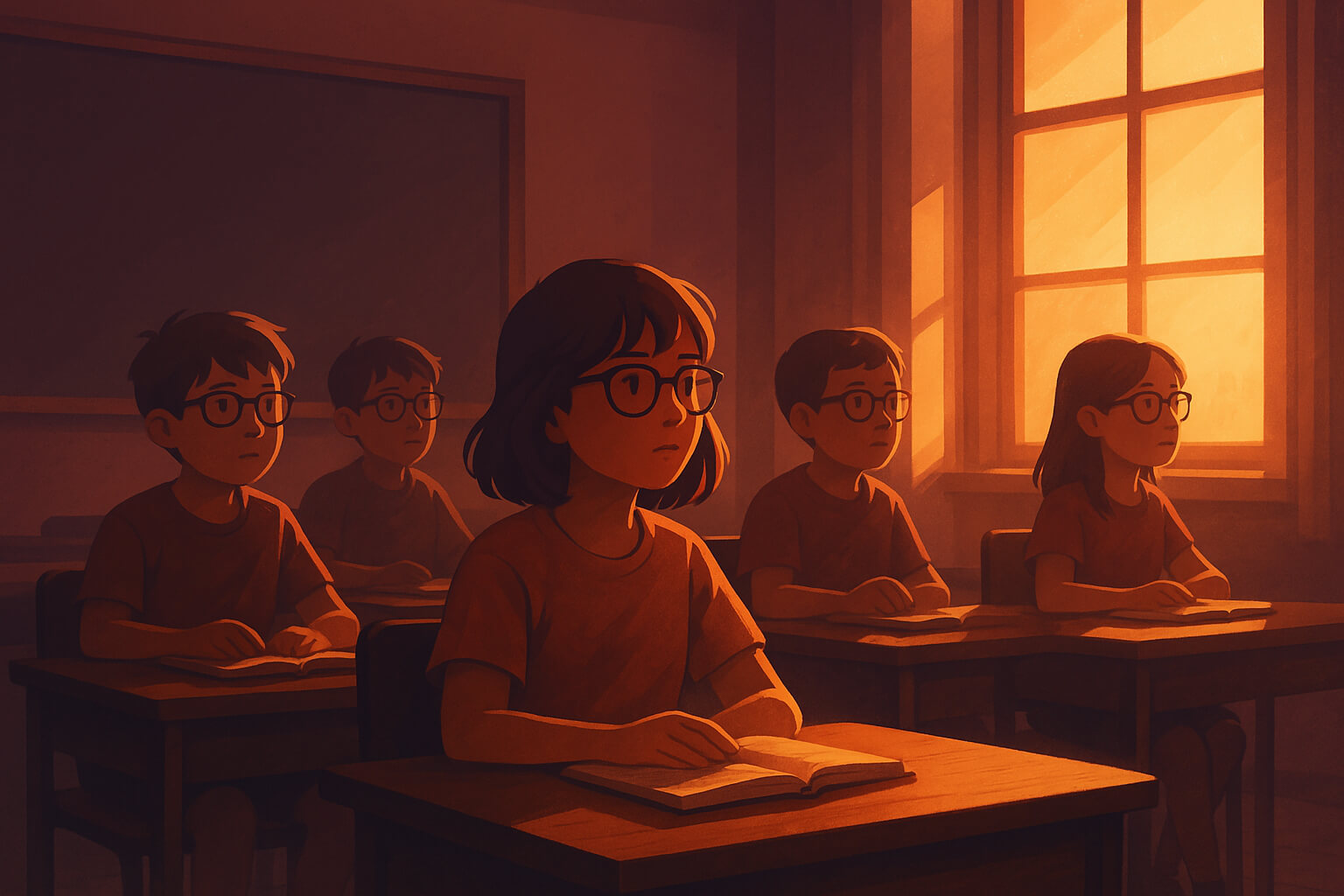
The longer someone stays in school, the worse their eyesight becomes. Randomized studies show that every additional year in education increases myopia by -0.27 diopters on average. A university graduate, on average, loses about 1 diopter during their academic life.
There are two major environmental triggers behind this:
Lack of natural light
Daylight stimulates the retina to release dopamine, which slows down the elongation of the eyeball in children. Without this, the eye grows too long, leading to myopia. Children who spend more time outdoors are up to three times less likely to become myopic.
Excessive near focus
Reading and writing for long periods means the eye muscles responsible for focusing are constantly engaged. This can result in muscle fatigue and encourage eye growth in length, worsening nearsightedness.
Combine these with dense urban environments, limited visual horizons, and some genetic predisposition: you get a perfect storm.
The future is already here
In Europe, myopia in young adults has doubled in just one generation. In Africa, early urban centers are now reporting myopia spikes.
In China, between 2015 and 2020, myopia doubled in 7-year-olds and tripled in 6-year-olds. The earlier it starts, the worse it gets. A child who becomes nearsighted at 6 can develop high myopia by age 11.
High myopia increases the risk of serious conditions like retinal detachment, macular degeneration, and even blindness.
What this means for the world
In South Korea and Singapore, military recruitment is already affected. Too many young people can't pass the uncorrected vision requirements, forcing armies to change selection criteria or cover the cost of eye surgeries.
In 2024, uncorrected vision problems cost the world an estimated $268 billion in lost productivity. For China alone, that’s $16 billion per year.
If half of all drivers need corrective lenses by 2050, we’ll face massive logistical, medical, and safety challenges.
What can we actually do
There are no silver bullets, but the solutions we do have are practical, proven, and already in use in some countries. Here’s what can help:
1. Reduce academic pressure early on
One of the clearest patterns behind rising myopia rates is intense academic workload - especially starting at a young age. In places like China and South Korea, students often spend more than 10 hours a day studying. That includes school, homework, evening classes, and weekend tutoring.
This kind of schedule leaves little time for outdoor activity, and it pushes kids to use their near vision for extended periods.
Taiwan is one of the first countries to officially address this. It has introduced regulations limiting homework and encouraging schools to build outdoor time into the daily routine. These efforts are starting to show early signs of slowing myopia progression.
The idea isn't to compromise academic success. It's about finding a balance that protects long-term health without sacrificing education.
2. Increase daylight exposure
Sunlight plays a protective role in how our eyes grow.
When the retina receives enough daylight - especially bright, natural light - it releases dopamine, a neurotransmitter that slows down the elongation of the eyeball. This mechanism is one of the key ways to prevent myopia from taking hold, particularly in children.
Studies show that just two additional hours of outdoor time per day can reduce the risk of developing myopia by up to 50%. It doesn’t need to be exercise or structured play. Even sitting in a shaded park doing nothing helps, as long as the eyes are exposed to ambient daylight and can focus on distant objects.
In countries like Singapore and China, some schools have already begun holding classes outdoors or under brighter lighting conditions indoors to mimic this effect.
3. Limit screen time under age 5
This is one of the more straightforward recommendations - and also one of the hardest for modern families to follow.
The World Health Organization advises that children under the age of 5 should not exceed one hour of screen time per day. For children under 2, ideally, it should be avoided altogether.
Why? Because prolonged screen use at close range encourages sustained near focus, something young eyes are not designed for over long durations. It also usually replaces outdoor activity, reducing exposure to protective daylight.
Excessive screen use is not just about entertainment - it often includes digital learning, video calls, and even passive watching. All of this counts toward the strain that contributes to myopia development.
4. Identify at-risk children early
Some kids are simply more likely to become myopic than others.
This includes children with one or both parents who are myopic, as well as those whose eyeballs are already longer than normal - something that can be detected via early vision screenings.
The good news is that there are now several medical interventions that can slow the progression of myopia:
-
Low-dose atropine eye drops
These have been shown to reduce the rate of myopia progression by about 50% in many studies. -
Orthokeratology (Ortho-K) lenses
Special rigid contact lenses worn overnight that reshape the cornea temporarily and may slow eye elongation. -
Multifocal soft contact lenses
Designed to reduce strain during near work and slow progression.
Early intervention is key. The earlier myopia appears, the more likely it is to become severe in adulthood.
5. Follow the 20-20-20 rule
This one applies to all of us - not just kids.
The rule is simple: for every 20 minutes of close-up work (like staring at a screen), take a 20-second break to look at something at least 6 meters (20 feet) away.
It sounds trivial, but this helps relax the ciliary muscles inside your eyes, which are responsible for focusing up close. Over time, constant close-up use without breaks can fatigue these muscles and contribute to eye strain, potentially accelerating myopia in younger people and increasing discomfort in adults. You can read more about it here.
To make this easier, I made LookAway. It reminds you to take breaks at regular intervals, so you don’t need to remember yourself. Even small nudges like this can add up over time to protect your vision.
The common thread in all of this?
We need to let our eyes do what they evolved to do: look far, under sunlight, and move freely. Our modern lifestyles - indoors, screen-heavy, fast-paced - go directly against that. But the fixes don’t have to be complex. They just require awareness and a few deliberate changes in routine.
A personal note
I had myopia for years, until I got SMILE surgery to correct it. But not everyone gets that option, and the numbers show we’re heading toward a future where blurry vision is the norm.
The most worrying part? This crisis is preventable. We just have to act before it's too late.
References
- Holden B. et al. (2016). Global Prevalence of Myopia and High Myopia. Ophthalmology, 123(5).
- Rudnicka A. et al. (2016). Time trends in the prevalence of childhood myopia. British Journal of Ophthalmology, 100.
- Dong L. et al. (2020). Prevalence and time trends of myopia in China. Retina.
- Pan W. et al. (2025). Myopia trends in Chinese children. The Lancet Regional Health – Western Pacific.
- Bikbov MM et al. (2023). Optic nerve atrophy in high myopia. Ophthalmology, 130(11).
- Németh J. et al. (2021). Guidance on myopia management. European Journal of Ophthalmology, 31.
- WHO Bulletin. (2009). Lost productivity from uncorrected refractive error.
- Lee D. et al. (2018). Risk factors for myopia in young adults in Korea. Scientific Reports, 8.
